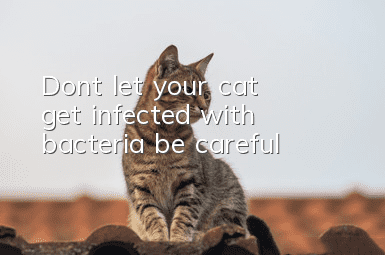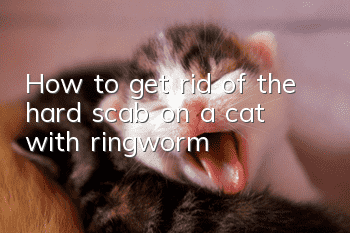Don’t let your cat get infected with bacteria, be careful!

Let cats grow up healthily and avoid bacterial infections
Bacteria are a type of microorganisms that we cannot see with the naked eye. They are everywhere. Bacteria are very harmful. After infection, cats will become ill. , many people have the impression that cleaning more can keep away bacteria. In fact, it is far from that simple. Understanding the growth needs of bacteria and changing some habits in daily life can help you better defend against pathogenic bacteria. Don’t let your cat be infected with bacteria, be sure to pay attention!
1. What do bacteria look like?
Want to know what bacteria look like? In fact, it is very simple, because the shape of bacteria is usually very regular, and you can roughly imagine what it looks like from the name of the bacteria. Like "E. coli," almost all bacteria have names with a suffix that describes their shape.
Most bacteria can be divided into three categories based on their shape: rod-shaped bacilli, spherical cocci, and spiral-shaped spirillides.
2. Where can bacteria be found?
Food utensils: If the cat’s food and water basins are not cleaned up in time, the food residue will deteriorate and produce bacteria.
Toilet: Many owners will prepare a toilet for their cats at home. If it is not cleaned in time, it will cause a large number of bacteria to breed. If there are pathogenic bacteria, it will also infect other pets in the home.
Bacteria in the restroom: Humid restrooms are a favorite place for bacteria, but which part of the restroom has the most bacteria? I know what you want to answer, but the real answer will surprise you. Some scientists have conducted experiments and found that there are more bacteria on the sink handle than in the toilet! When you turn off the tap after washing your hands, the bacteria will return to your hands.
3. How do bacteria spread?
Main transmission routes: saliva transmission, feces transmission, droplet transmission, contact transmission
4. Growth conditions of bacteria
1. Sufficient nutrition
There must be sufficient nutrients to ensure the normal metabolism of bacteria and the necessary raw materials and energy for growth.
2. Suitable temperature
The temperature limit for cell growth is -7℃~90℃. Bacteria cannot survive below or above this temperature, except for a few grade-eating bacteria.
3. Appropriate pH
Most pathogenic bacteria prefer neutral or weakly alkaline living environments, but a few can survive in acidic environments.
4. Gas environment
This refers to the oxygen demand of bacteria, and some can only survive in aerobic conditions.
5. How to avoid bacterial infection?
For people themselves:
1. Paper soap
Most paper soaps are very cute and small. A small box is very convenient to carry, and also solves the problem of ordinary incenseThe surface of soap is moist and prone to bacteria, so it is the best hygienic companion for going out and traveling.
2. Alcohol-free hand sanitizer
Alcohol-based hand sanitizer is easy to use. After rubbing it evenly on your palms, the alcohol will evaporate naturally and there is no need to rinse it again.
3. Dryer
Drying is the most scientific and hygienic method to remove moisture from the body surface and clothing, but it is rarely used in households. People with deep pockets and a sense of sterilization will install human body dryers in their homes that are only seen in high-end clubs.
For cats:
1. Increase nutrition
Only by increasing nutrition and enhancing resistance can cats have better immunity. to fight bacterial infections.
2. Injection of vaccine
When the antibodies in the mother cat’s milk subside, in order to maintain and enhance the resistance to the disease, vaccination should be started as soon as the kittens are close to eight weeks old. A series of vaccinations is given until four months of age; lifelong protection is continued with annual booster vaccinations.
- Why do cats like to hold their little hands?
- What should I do if my cat bites people even if it refuses to cut its nails?
- How to prevent cats from scratching walls. Train cats not to scratch walls.
- What should you pay attention to after urethrostomy surgery in male blue cats?
- What to do if a cat is anorexic? Most cats can regain their appetite after treatment
- One of the few things cat owners must pay attention to is whether I can spank a cat. Attention cat owners!
- Why doesn’t anyone keep Selkirk Rex cats?
- Why do short-legged cats have short legs?
- It takes a few days for a kitten to open its eyes and walk on its own
- What's going on with the black mud inside the cat's ears?



